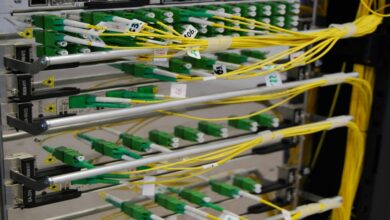Empowering Efficiency: The Essentials of Equipment Finance

In today’s fast-paced business landscape, achieving operational efficiency is crucial. Companies across various sectors strive to stay competitive by upgrading their equipment and technology. However, the high costs of acquiring state-of-the-art machinery can be a significant barrier. This is where equipment finance comes into play, offering a practical solution to modern businesses aiming to boost productivity without compromising their cash flow.
Understanding Equipment Finance
What is Equipment Finance?
Equipment finance is a financial strategy that allows businesses to acquire, lease, or loan the equipment needed to operate without paying the total cost upfront. This financing type applies to many assets, from manufacturing machinery and office equipment to heavy vehicles and high-tech devices. The essence of equipment finance lies in its ability to spread the cost of expensive equipment over a period, thus making it more manageable for businesses to invest in necessary technology. By breaking down the total expense into affordable instalments, companies can avoid depleting their capital reserves, ensuring they remain financially stable while gaining access to essential tools. This flexibility is advantageous for small to medium-sized enterprises that might otherwise struggle to compete with giant corporations with more substantial financial resources.
How Does Equipment Finance Work?
The process typically involves a business selecting the equipment it needs and then approaching a financier who purchases the item on behalf of the company. The business then uses the equipment while paying back the finance amount in instalments over an agreed-upon period. At the end of the term, depending on the type of finance agreement, the business may have the option to purchase the equipment, renew the lease, or return it.
Benefits of Equipment Finance
Preserving Cash Flow
One of the primary advantages of equipment finance is the preservation of cash flow. Businesses can retain their capital for other critical areas like expansion, research and development, or increasing operational capacity. By not committing a large sum of money upfront, companies can maintain a healthier financial balance and better manage their resources.
Access to the Latest Technology
Equipment finance allows businesses to update their technology frequently. In industries where technological advancement is rapid, being able to upgrade equipment through financing means companies can stay at the forefront of innovation. This access helps maintain a competitive edge by increasing efficiency and productivity with the latest functionalities.
Tax and Accounting Benefits
Financing equipment can also offer potential tax benefits. Payments for leased equipment are often considered operational expenses and may be deductible. Moreover, financing can affect the balance sheet positively by not increasing the company’s debt ratios in the same way a traditional loan might.
Critical Considerations in Equipment Finance
Choosing the Right Type of Financing
Several equipment financing options exist, including operating leases, finance leases, and hire purchases. Each type comes with its own set of benefits and obligations. For instance, an operating lease might be suitable for equipment that quickly becomes obsolete, while a hire purchase could be better for machinery intended for long-term use. Understanding these differences is crucial for making an informed decision that aligns with business goals.
Evaluating Terms and Conditions
It’s essential to evaluate any finance agreement’s terms and conditions carefully. Interest rates, payment terms, total cost of ownership, penalties for early termination, and the contract’s flexibility should all be considered. Comparing different financiers and their offerings can ensure that a business secures the best possible deal.
Long-Term Strategic Planning
Integrating equipment finance into long-term strategic planning is vital. Businesses should assess not only their current needs but also future goals. This foresight ensures that the chosen financing option complements a broader operational strategy, supporting sustainable growth and adaptation in a changing market environment.
Conclusion
Incorporating equipment finance into a business strategy can significantly enhance operational efficiency and competitive positioning. By understanding and utilizing various financing options, businesses can maintain robust cash flow, access cutting-edge technology, and manage resources more effectively. This approach allows for more strategic financial planning and less strain on working capital, facilitating smoother operations and the ability to respond to market changes quickly. Additionally, the flexibility offered by equipment finance helps companies adapt to technological advancements without the risk of obsolescence. In an era where agility and adaptability are more critical than ever, equipment finance is an indispensable tool for growth-oriented businesses aiming to optimize their operational capabilities and drive sustainable growth.





